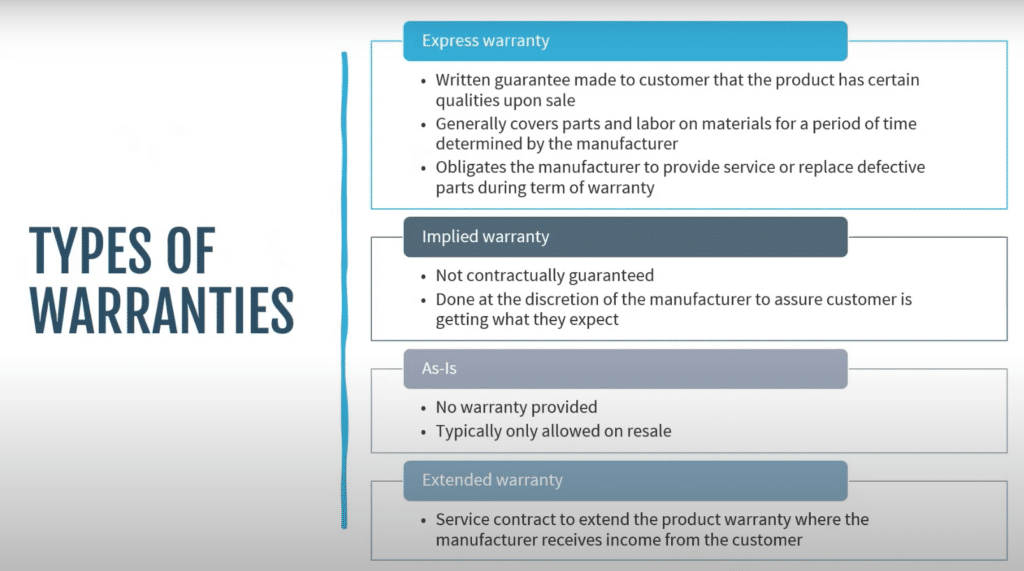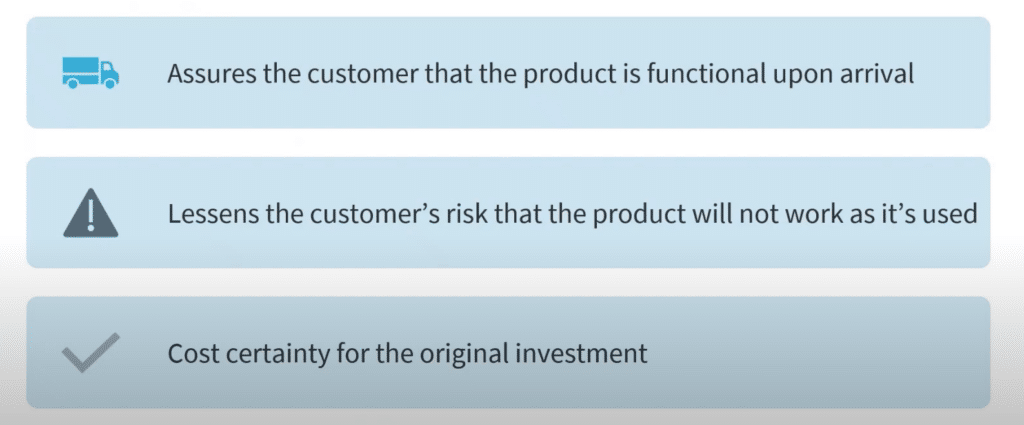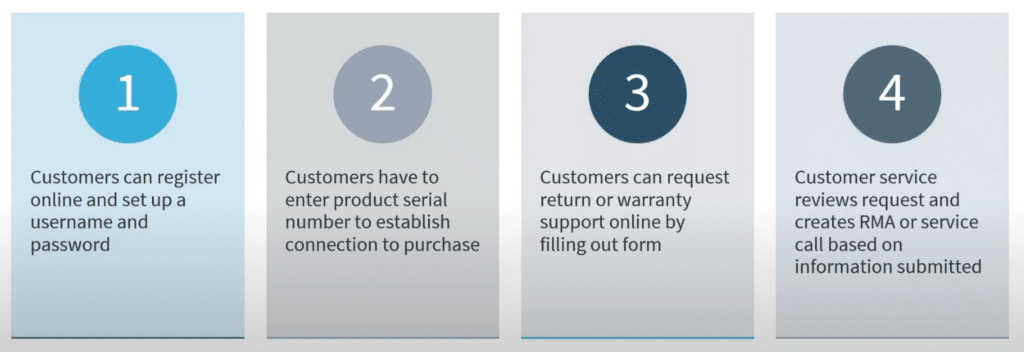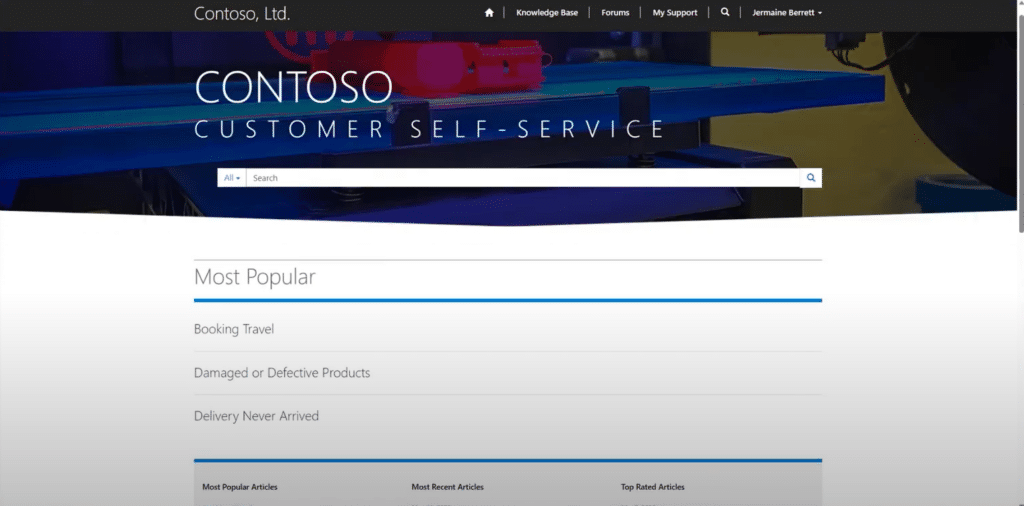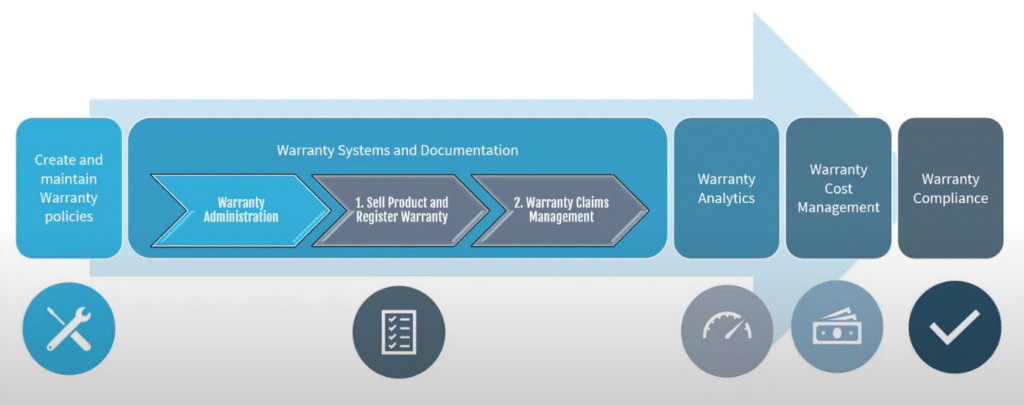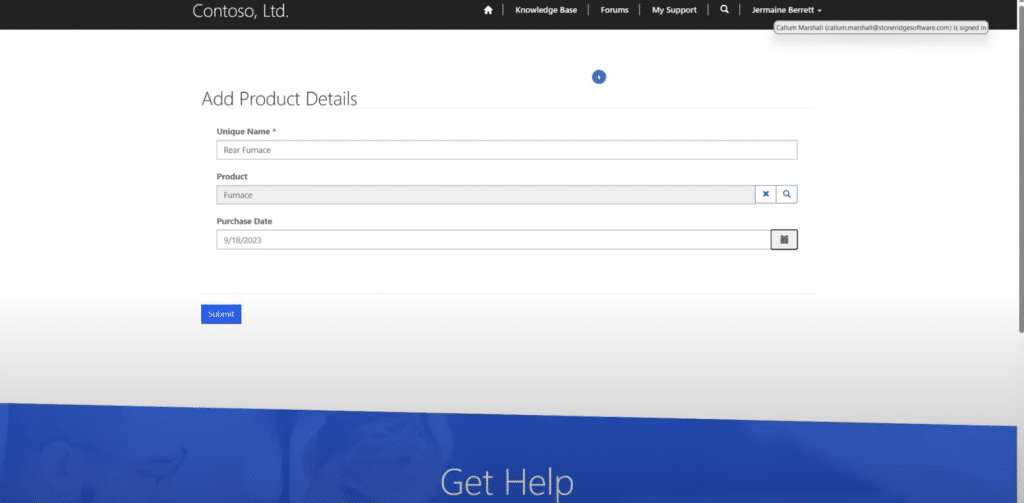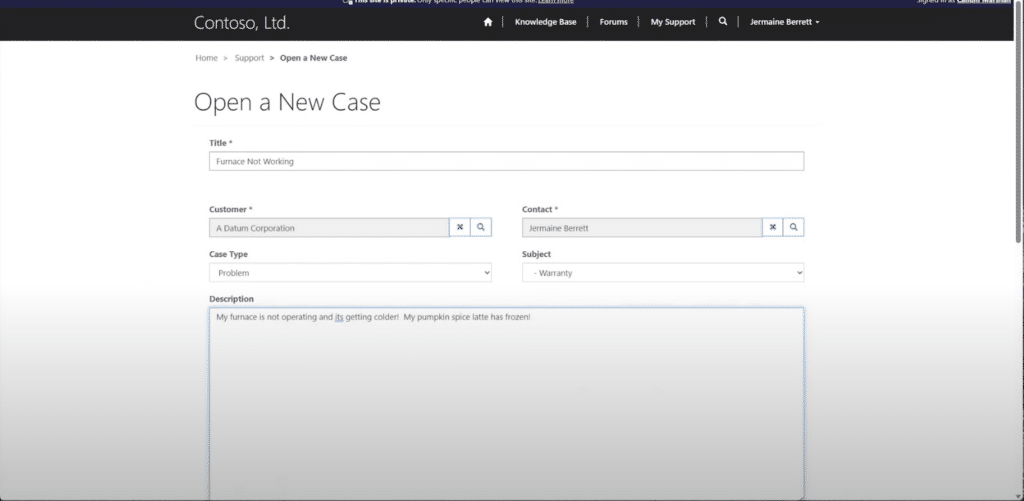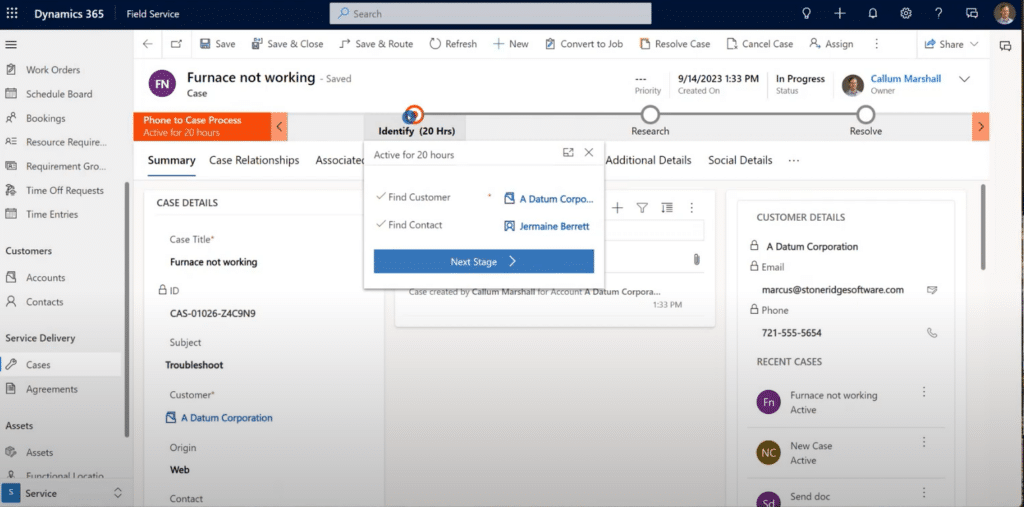How Dynamics 365 Customer Engagement Warranty Management Can Decrease Operational Costs and Increase Customer Satisfaction
Using Dynamics 365 Customer Engagement Warranty Management can keep your customers satisfied with their purchases and allow you to handle warranty claims effectively and efficiently.
As a manufacturer, you know how important warranty management is, even though it can be challenging. In this blog, we will highlight common types of warranties, why they are beneficial to your customers, why they can be difficult to manage, and how you can address those challenges head-on.
We will place additional focus on managing warranties through a portal solution in Dynamics 365 Customer Engagement. We will touch on how portals can enhance customer experience and simplify and streamline your warranty operations. Customer Engagement encompasses the following areas:
- Dynamics 365 for Sales
- Dynamics 365 Customer Insights-Journeys (formerly Dynamics 365 Marketing)
- Dynamics 365 for Customer Service
- Dynamics 365 for Field Service
Dynamics 365 Customer Engagement Warranty Management: Four Common Types of Warranties
Warranties are promises or guarantees that a product or service will meet certain standards of quality, performance, or durability. Warranties can protect both the manufacturer and the buyer from potential problems or defects with a product after purchase. But not all warranties are the same, and it's important to understand the differences between them.
Here are four common types of warranties:
Express warranty
An express warranty is a written or verbal statement explicitly stating the specific features, benefits, or conditions of a product or service. For example, if you buy an electronic, you may receive a warranty for a certain amount of parts and labor coverage on the receiver. An express warranty is a contractual obligation that binds the seller or manufacturer to fulfill certain terms, such as repairing or replacing a defective product within a specified period. Express warranties can vary depending on the type of product, the manufacturer, and the industry. They can be either business-to-business (B2B) or business-to-consumer (B2C).
Implied warranty
An implied warranty is a legal presumption that a product or service is fit for its intended purpose and meets the reasonable expectations of the buyer. Unlike an express warranty, an implied warranty is not explicitly stated or agreed upon by the parties. Instead, it is implied by the nature of the transaction, the conduct of the manufacturer, or the applicable laws or regulations. For example, if you buy a product online, there may not be an express warranty on it, but you still expect the product to work as advertised. If the product is faulty, you can provide feedback by reviewing the product and leaving a low rating or contacting the seller to see how the issue can be resolved. As a manufacturer, this is not something you design a system around, but it is a reality.
“As is”
Although not technically a specific type of warranty, “As is” is a term that indicates that a product or service is sold without any warranty. This means that the buyer assumes all the risks and responsibilities for the quality and performance of the product or service. Meanwhile, the seller has no obligation to repair, replace, or refund the product or service if it is defective or unsatisfactory. “As is” is often used for selling used or refurbished products, such as cars, furniture, or electronics.
Extended warranty
An extended warranty is an optional warranty that extends the coverage or duration of the original warranty, usually for an additional fee. An extended warranty can offer more protection and peace of mind to the buyer, as it can cover more parts, labor, or services. It can also provide more convenience, such as free shipping, home service, or loaner products. An extended warranty can also be a source of revenue and customer loyalty, as it demonstrates the seller’s confidence in the quality of the product or service. That can encourage buyers to return for future purchases or referrals.
Dynamics 365 Customer Engagement Warranty Management: Why Warranties are Valuable
When determining whether or not you want to offer warranties, it is important to consider the benefits to you, your customers, and your relationship with them. Offering warranties is not only a source of revenue but can boost customer satisfaction and confidence in their purchase. Warranties earn their trust and loyalty, which can boost sales. As a consumer, warranties offer several potential advantages including:
- Assurance & Risk Reduction: You can assure customers the product or service they purchased is functional and meets the expected quality standards. You can also reduce the customer's risk of buying a product, knowing that if service fails or malfunctions, they can rely on the warranty to get it fixed or replaced.
- Cost Certainty: Warranties can give customers cost certainty for their original investment. They can cover the costs of parts, labor, or services needed to repair or maintain the product or service within a certain period. Warranties can also prevent customers from spending additional money on buying a new product or service or hiring a third-party service provider.
Why Warranty Management is Such a Complex Process
Warranty management can be challenging to execute effectively because it involves different systems and processes than those used for creating products. While some manufacturers focus on optimizing their systems for producing high-quality products, they may neglect or overlook systems that manage warranties. To do this effectively, it's important to have a system in place that can handle contract management, serial number tracking, field service coordination, remake and redistribution capabilities, and cost analysis.
There are three common ways to do warranty management from a system standpoint, each of which has pros and cons.
The Paper and Snail Mail
This method is common but outdated and inefficient. The customer receives a card with the product and fills out a form to register the warranty. They then mail the card back to the business, which tracks the registration in a file or a database. When a defect occurs, the customer calls a customer service line to request a service. Then your business coordinates with a field service team, a distributor, or a local repair shop to perform the service. Your business may also have to remake or redistribute the product to the customer, which adds to the cost and time.
- Pros: Simple and low-cost for the business; familiar and easy for the customer
- Cons: Slow and inefficient for both parties; prone to errors and delays; hard to track and analyze warranty data; high cost of service and remakes
The Semi-Automated Option
This is a more modern and convenient way to do warranty management but still requires human intervention and coordination. The customer registers the warranty online or through a mobile app, using a QR code, a serial number, or a receipt. The business stores the warranty data in a database or a spreadsheet, which can be accessed and updated by the staff. When a defect occurs, the customer contacts the business through email, chat, or phone to report the issue and request a service. The business uses a software tool or a manual process to assign the service request to a field service team, a distributor, or a local repair shop. The business may also have to remake or redistribute the product to the customer but with less frequency and cost.
- Pros: Faster and more convenient for the customer than the paper and snail mail option; easier to track and manage warranty data for the business; lower cost of service and remakes
- Cons: Still requires human intervention and coordination; may not integrate well with other systems; may lack security and compliance features; may not provide enough visibility and analytics
Warranty Management Through a Portal
A portal-based system is an ideal integrated solution for warranties in today’s digital environment. Customers can easily register their warranties on the web or their mobile devices, using a code, a number, or a receipt. The system integrates with other business systems, such as ERP, CRM, and field service, and streamlines the entire warranty process. Customers can request service on the web or their mobile devices, and receive a confirmation and a tracking number. The system can then allocate the service request to the most appropriate service provider, based on various criteria.
The system can also produce real-time reports and analytics on warranty performance, costs, and trends, to provide additional insights to the manufacturer.
- Pros: Fast and efficient for both parties; reduces errors and delays; improves customer satisfaction and loyalty; optimizes service quality and costs; enhances security and compliance; provides insights and intelligence
- Cons: May require investment and maintenance of the warranty management system and additional support or training to ensure the process runs smoothly.
Dynamics 365 Customer Engagement Warranty Management: How it Works
To further understand the advantages and how a portal-based warranty management system works, let’s dive into how Dynamics 365 Customer Engagement, which includes modules for sales, marketing, customer support, digital contact center, and field service, can support your warranty process and enhance your customer engagement.
Warranty management is a complicated lifecycle process and has many moving parts across multiple departments, systems, and applications. It's important to note that solid warranty management is not just about a new system. It's really about analyzing and improving your processes and aligning them with your system.
We are going to focus on two main aspects of this lifecycle process:
Sell Product and Register Warranty
Once you sell a product, warranties need to be registered quickly by capturing customer data and information on the product they purchased and its warranty terms. Before jumping right into relying on a warranty management system, it's important to consider a few things:
- Are you selling business-to-business (B2B) or business-to-consumer (B2C)?
- How are you selling it? Online? In-person? Over the phone?
- Is it a product a customer can buy easily or does it have to be installed by a technician?
- How would your customers prefer to register their warranty?
Having the answers to these questions can help you determine which one of the methods listed above is best for your business. For example, B2C sales typically happen in-store and register a product warranty as soon as it is scanned and applied to a customer profile. For B2B sales, the most effective way to do things is after a technician installs something either by snail mail or the more modern and preferred option of a Dynamics 365 Customer Engagement-supported portal.
Portals are external-facing websites where customers can go to get information on a wide range of topics. They are the most efficient way to allow customers to register portals if they aren't buying something in-store. One of the biggest benefits of portals is they come with built-in authentication and security, meaning only authenticated users can access them. You can also customize them with your company's branding, design a layout that works for you, and install a chat feature.
Warranty Claims Management
Once your customer is through the buying process and has purchased their warranty, the next step is establishing a process to deal with warranty claims. If a product gets damaged or doesn't perform properly, a customer can make a warranty claim through multiple Dynamics 365-powered methods:
- Power Virtual Agents - An automated chatbot that can be configured to complete the entire claim
- Chat - Live chat with a customer service agent
- Web Portals - As detailed above, portals can help customers help themselves and can be configured to automatically create cases in your system when a customer does this
- Email - Similar to portals, Dynamics 365 Customer Engagement can create cases from an email
- Phone - Includes a Digital Contact Center, which is an out-of-the-box solution
- SMS - Many customers prefer to text out of convenience
- IoT (Internet of Things) - Support and service can happen remotely based on device telemetry or be escalated automatically to dispatch a technician in emergency scenarios
The best part of all this is you can program Dynamics 365 Customer Engagement to automatically create and even assign cases once customers take these first steps. Once a claim enters the system, your support workers can view their support cases, customer and product data, and warranty information. Having all of this information at your fingertips in a central location allows you to address warranty claims quickly to ensure customer happiness.
With Dynamics 365 Customer Engagement, you can improve your customer satisfaction and loyalty while reducing operational costs, errors, and delays. You can also gain valuable insights into your warranty performance, customer behavior, and product quality, to make better decisions to optimize business outcomes.
Need More Assistance with Dynamics 365 Customer Engagement Warranty Management?
If you want to learn more about how Dynamics 365 Customer Engagement can help you with your warranty management, please contact Stoneridge Software today. We would be happy to explore your unique business needs, answer any questions, and help you get started.
Under the terms of this license, you are authorized to share and redistribute the content across various mediums, subject to adherence to the specified conditions: you must provide proper attribution to Stoneridge as the original creator in a manner that does not imply their endorsement of your use, the material is to be utilized solely for non-commercial purposes, and alterations, modifications, or derivative works based on the original material are strictly prohibited.
Responsibility rests with the licensee to ensure that their use of the material does not violate any other rights.

